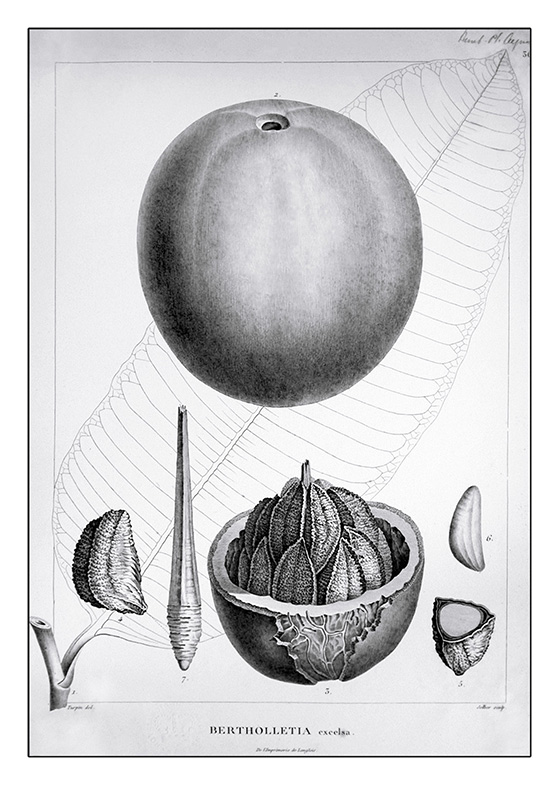Brazil Nut Cultivation for Sustainable Development in the Amazon
Norton Siano Ribeiro de Freitas and Roger D. Norton
Norman Borlaug Institute for International Agriculture
Texas A&M AgriLife Research
We contributed to the design and use of high-value non-timber forest products on smallholder plots to achieve sustainable reforestation of degraded areas in the Amazon Basin, protect and promote biodiversity, provide environmental services including mitigation of greenhouse gas emissions, and provide income opportunities for residents limiting pressures for unsustainable land use. This project assists 1,400 producers in 100 communities in the Baixo Rio Negro Region of the State of Amazonas to plant Brazil nut trees (Bertholletia excelsa) and learn to manage and harvest them to increase their incomes, safeguard the watershed against soil erosion, restore degraded areas, protect the region’s water quality and biodiversity, and contribute to sustaining the annual precipitation in the region. The project region includes the Amazon River between Manaus and Itacoatiara and the 14 tributaries of the Amazon there. It comprises 3 main watersheds (Rio Uatuma, Rio Urubu, Rio Preto da Eva) that are part of the Amazonas State System of Hydrological Resources.

Bertholletia excelsa, Engraving on paper by Pierre Jean François Turpin (1775-1840)
© copyright The Trustees of the Royal Botanic Gardens, Kew
Deforestation rates run up to 20% in some areas and water pollution is rising from sedimentation, pesticides, mercury, oil, human wastes and other sources. Increased use of the Brazil nut tree, in mixed cropping systems, was proposed as a main driver of sustainable reforestation because smallholders of the region have experience with it and because increased volumes of the nut can enter established and remunerative markets. The IUCN Red List of Threatened Species points out that “the Brazil nut tree has experienced major declines in its population because of deforestation. . . Trees remaining in the vast cattle ranches of Pará and Acre are neglected and dying. The production of Brazil nuts more than halved between 1970 and 1980, apparently because of deforestation. Almost all Brazil nuts consumed around the world still come from wild trees.”
Detailed ground-based measures of forest ecosystem services in project areas, degraded non-project areas, and protected forest areas are being developed. These measures include carbon content in the different land covers, tree carbon sequestration, understory vegetation carbon, and soil carbon. Similarly, ground-based work is developing water budgets, including added measures of soil infiltration for the different land covers. This includes measures of tree water use and soil moisture utilization, and measures at the forest stand level of potential soil chemical leaching losses to streams.
A multi-period, inter-temporal, price-endogenous, mathematical programming model was developed to define the amount of deforestation caused by dominant spatial and temporal trends in the project region; to understand the extent, tendency, and geographic distribution of land-use and land-cover alterations; to estimate carbon sequestration and water use effects of project activities; to estimate whether an expansion of nut cultivation could threaten native vegetation in the region; analyze the nature of the demand curve for nuts and whether price would hold up under significant expansion of production; estimate the economic benefits for 100 local communities in the Metropolitan Region of Manaus and calculate the economic rate of return for planting Brazil nuts with and without subsidies; and examine possible effects of climate change on these long-lived perennials.